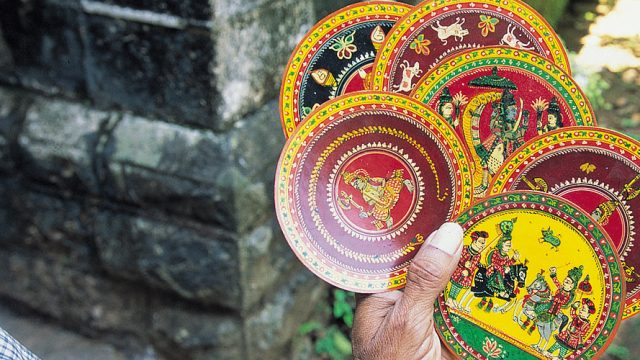The word Ganjifa probably derives from the Persian word ‘ganj’ which means ‘treasure’ or ‘granary’ — but has come to stand for card games. It was a well-known card game in Mughal times. Babur mentions it in his memoirs, and Abul Fazl claims Akbar simplified it.
Each suit has 2 court cards, Raja (King) and Mantri (Minister) and 10 other cards that adopt various attributes (avatars). Three types of cards are known: Chitrakatha, which is similar to the Paithan style and allows the mobility to the figures; the Devastaan (temple) style, which is rather static; and the widely acclaimed Ganjifa style, one of whose variations includes an iconographic depiction of the 10 incarnations of Vishnu in a typical stylised manner. Though kings used to play with cards made of ivory or tortoise shells laid with precious stones, the cards today are painted on cartridge paper cut into circles — highly skilled work demanding enormous patience. A bunch of cards takes nearly 3 months to make!
Sawantwadi (65 km/11/2 hrs) is a great place to pick up a pack. Cost varies from ₹1,500-2,000 for a pack.
Getting to Sawantwadi Drive to Kudal and then to Akheri Road Junction (15 km from Kudal) on NH17. From here, Sawantwadi is 3 km away. Taxis charge approx ₹500.




